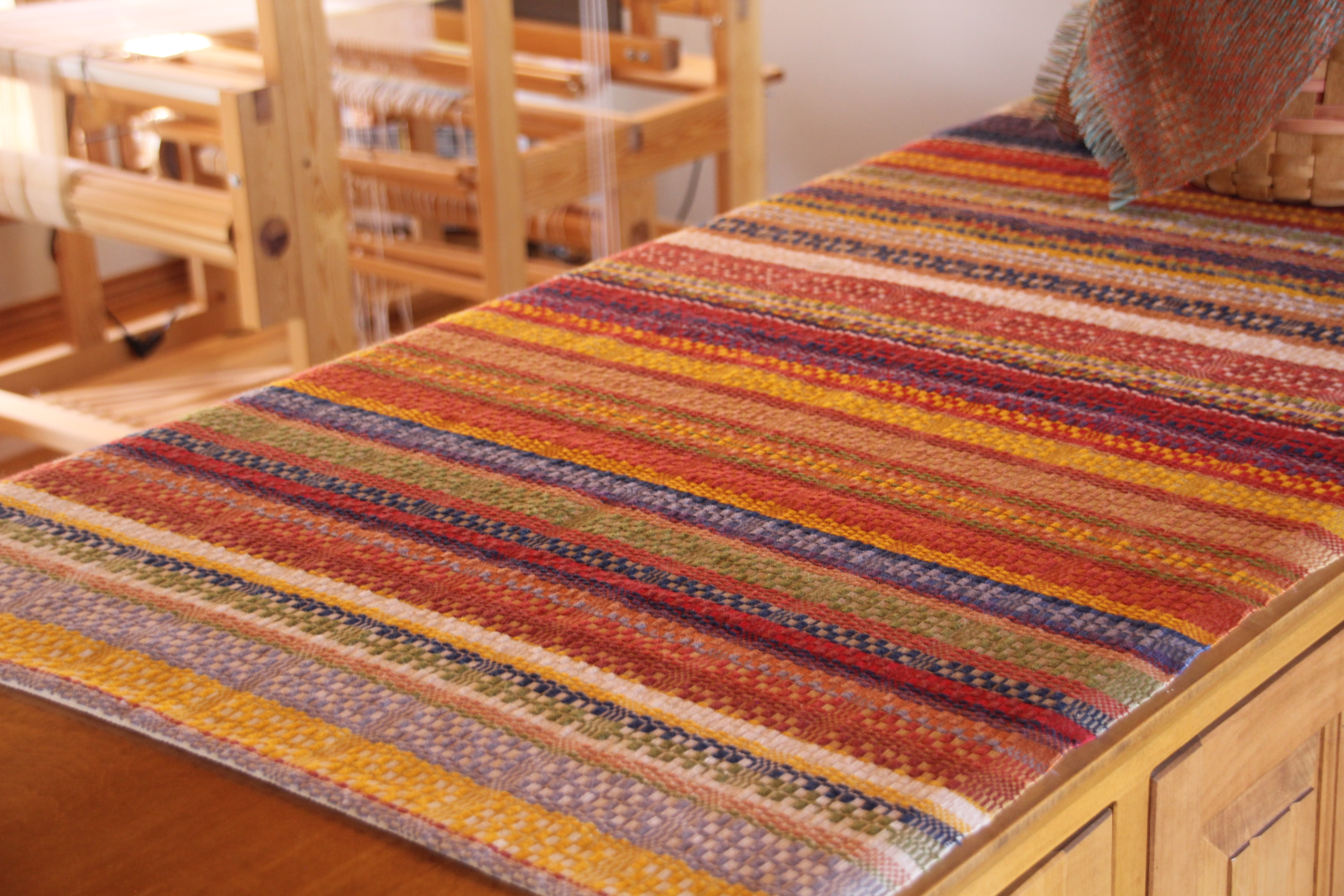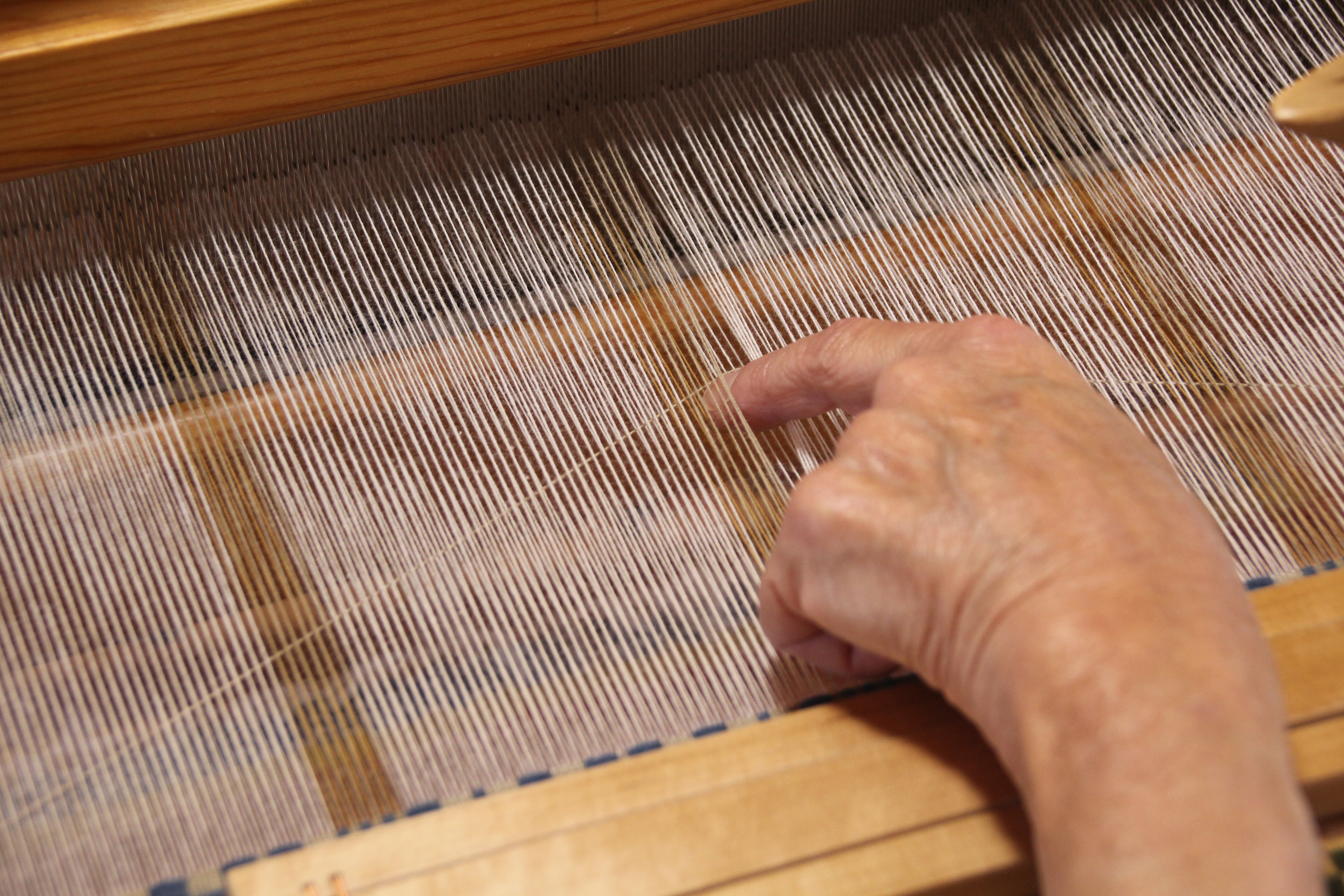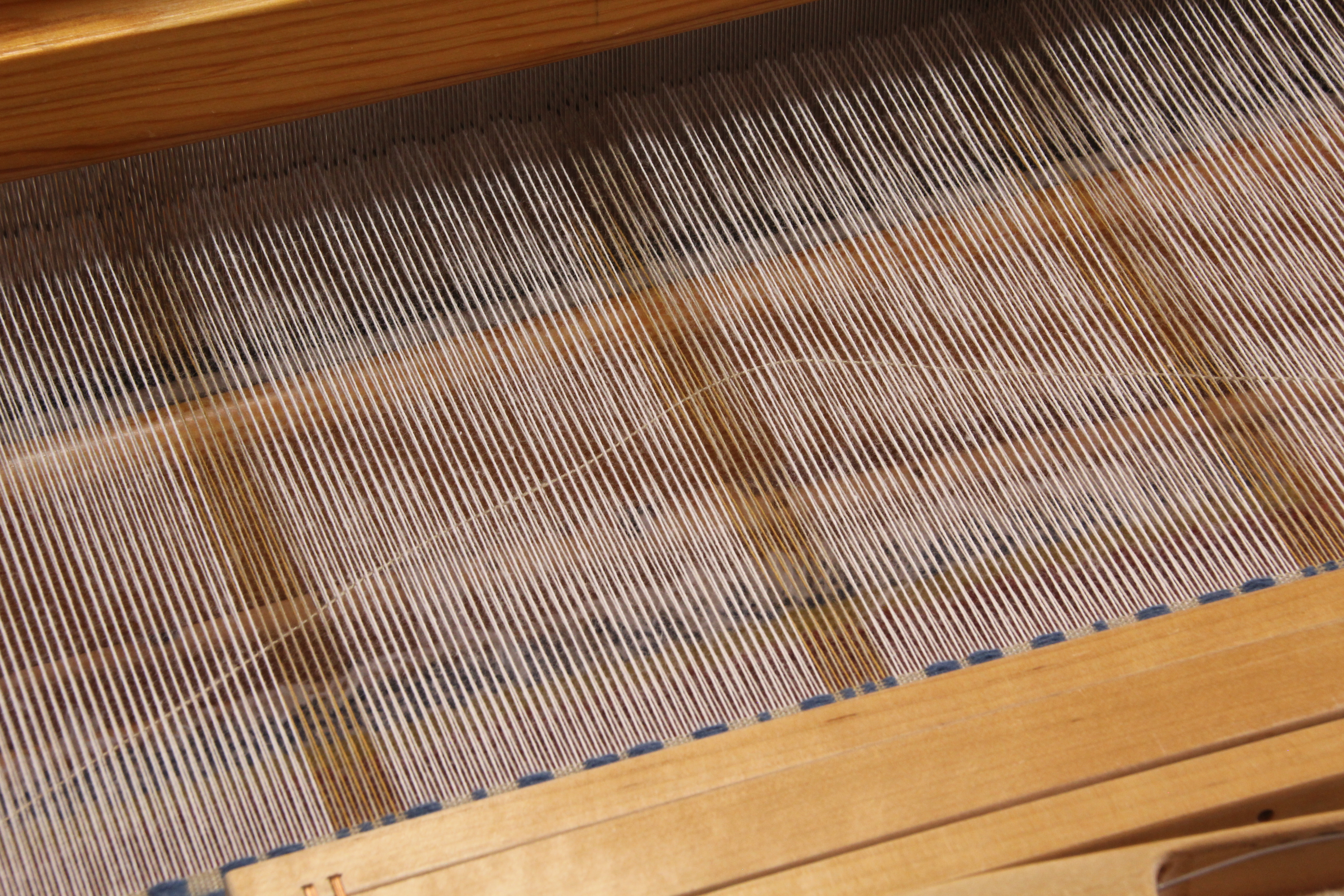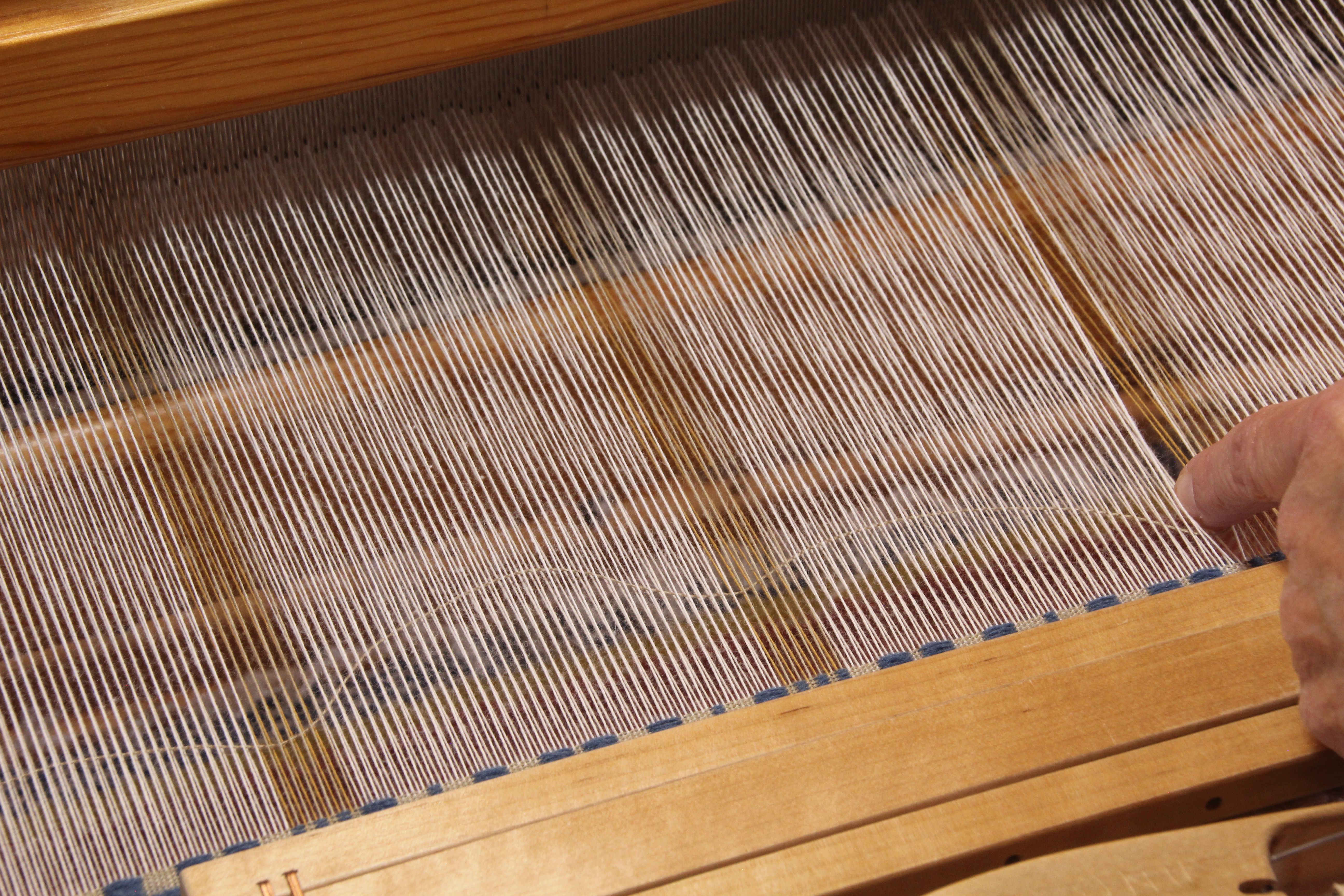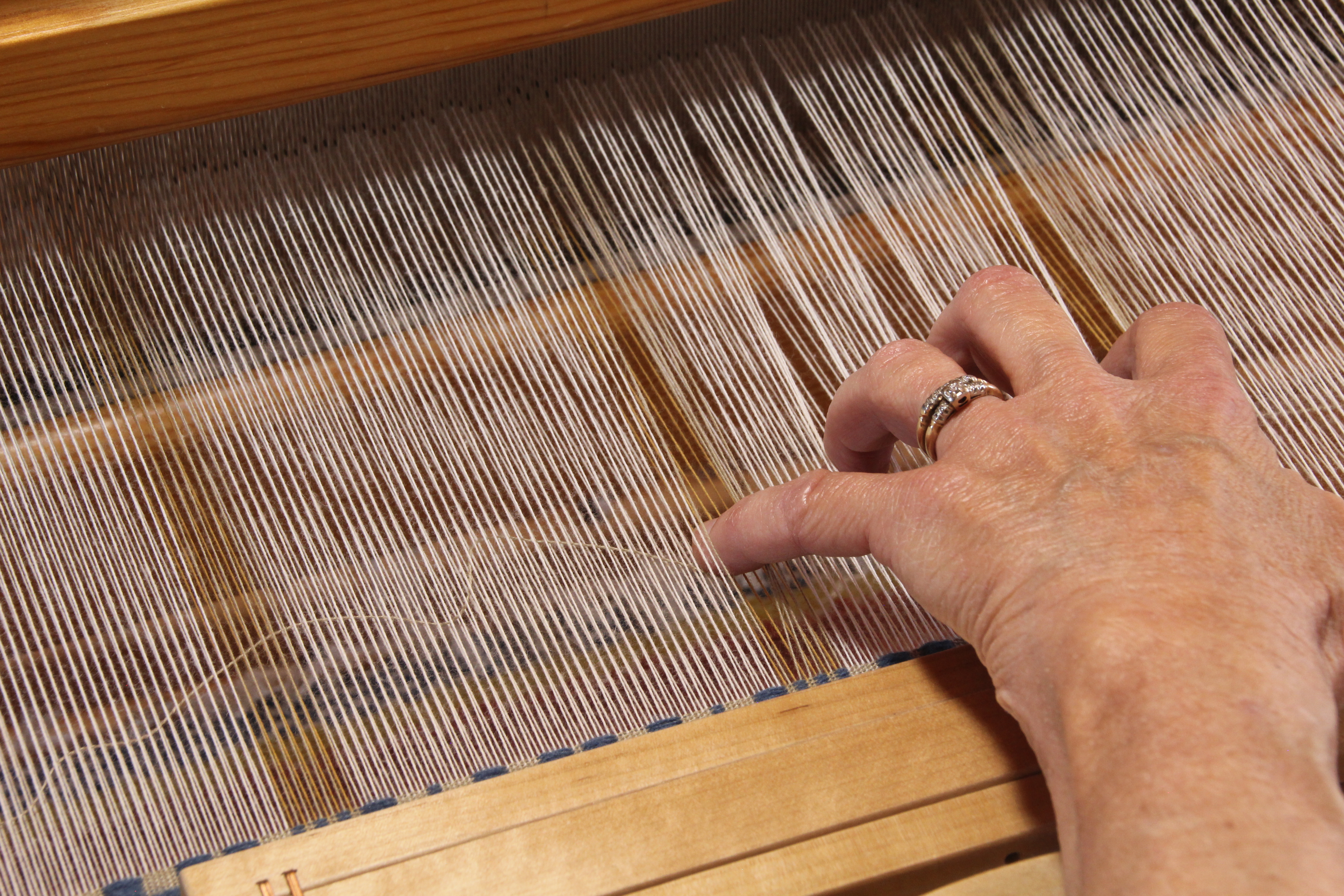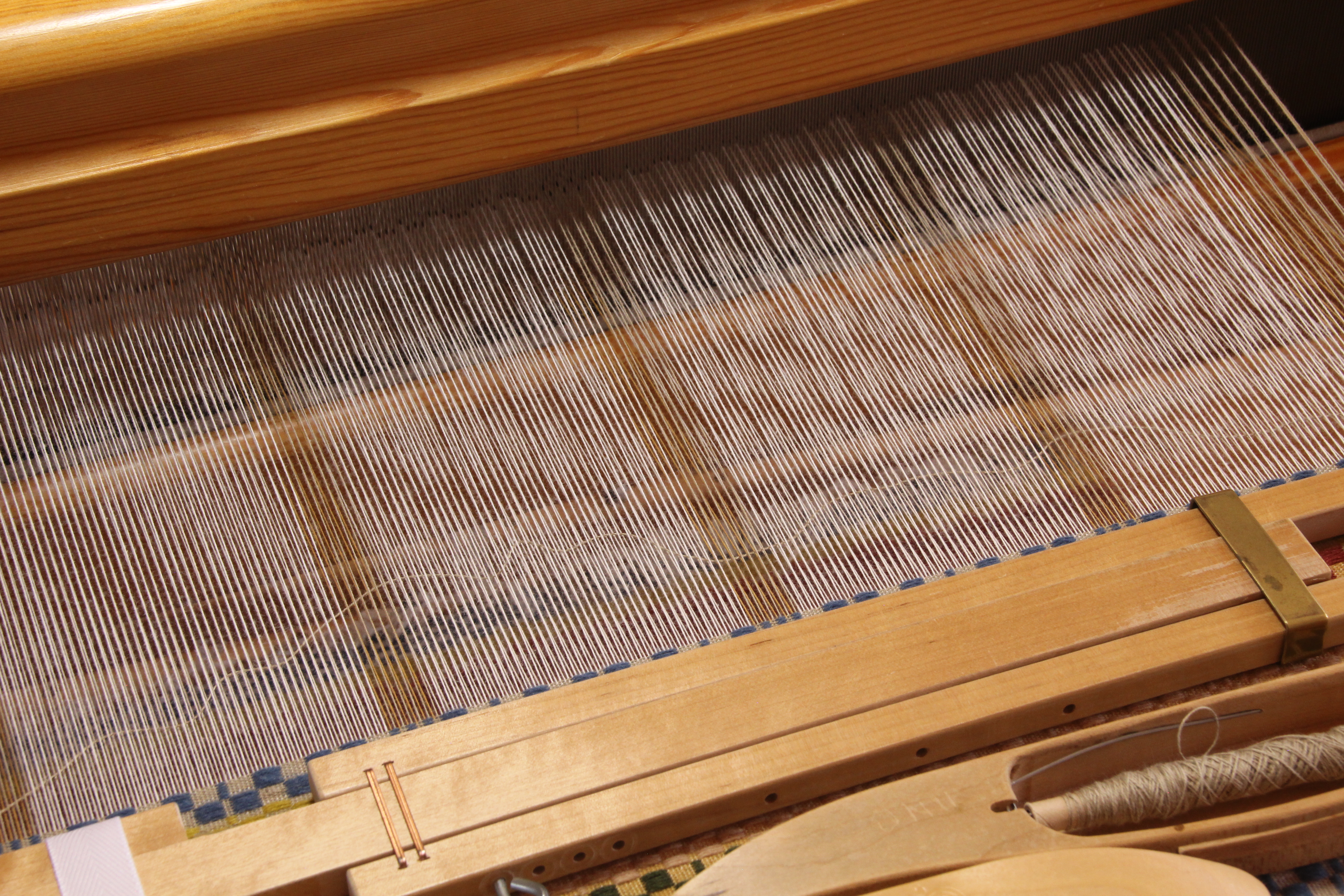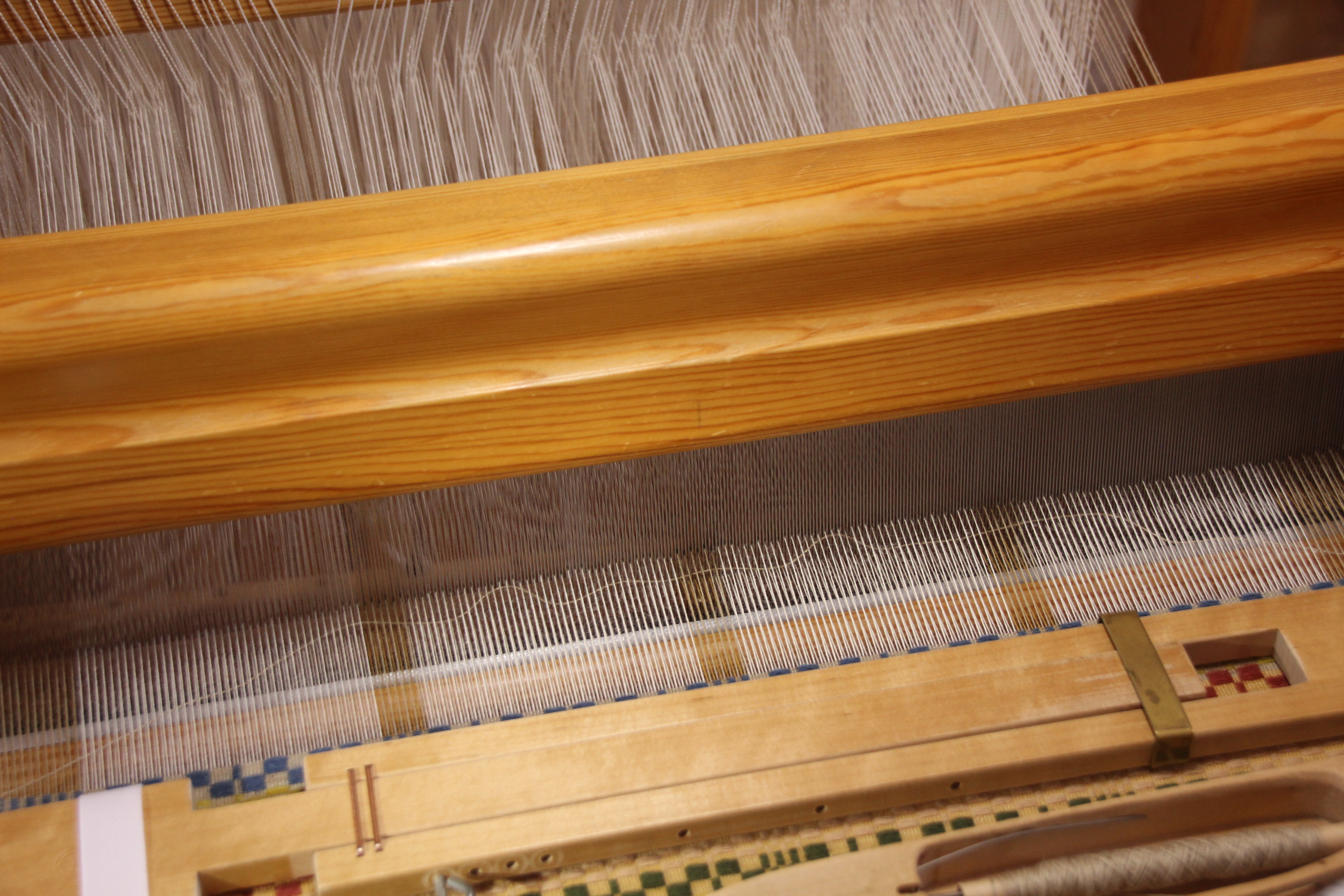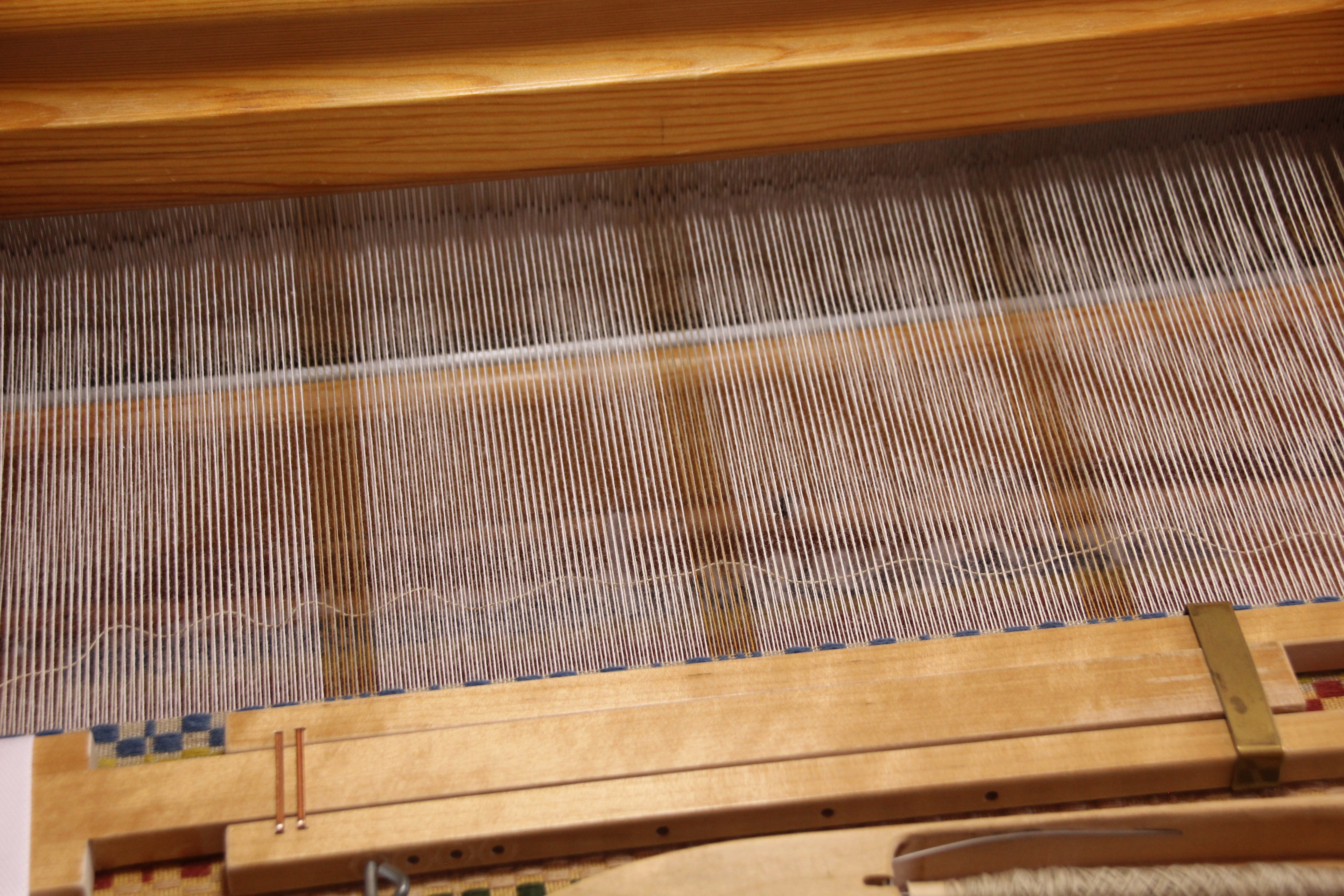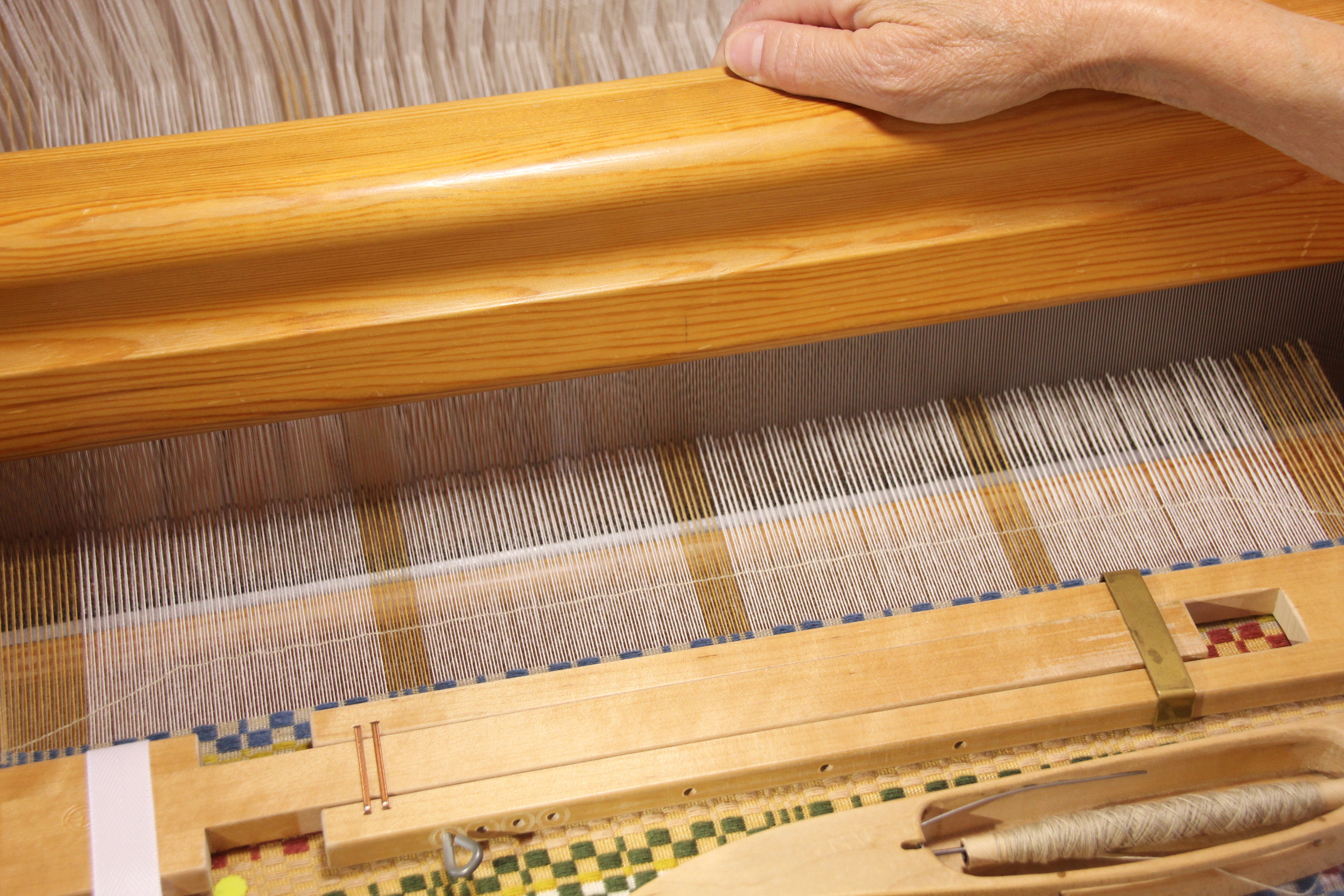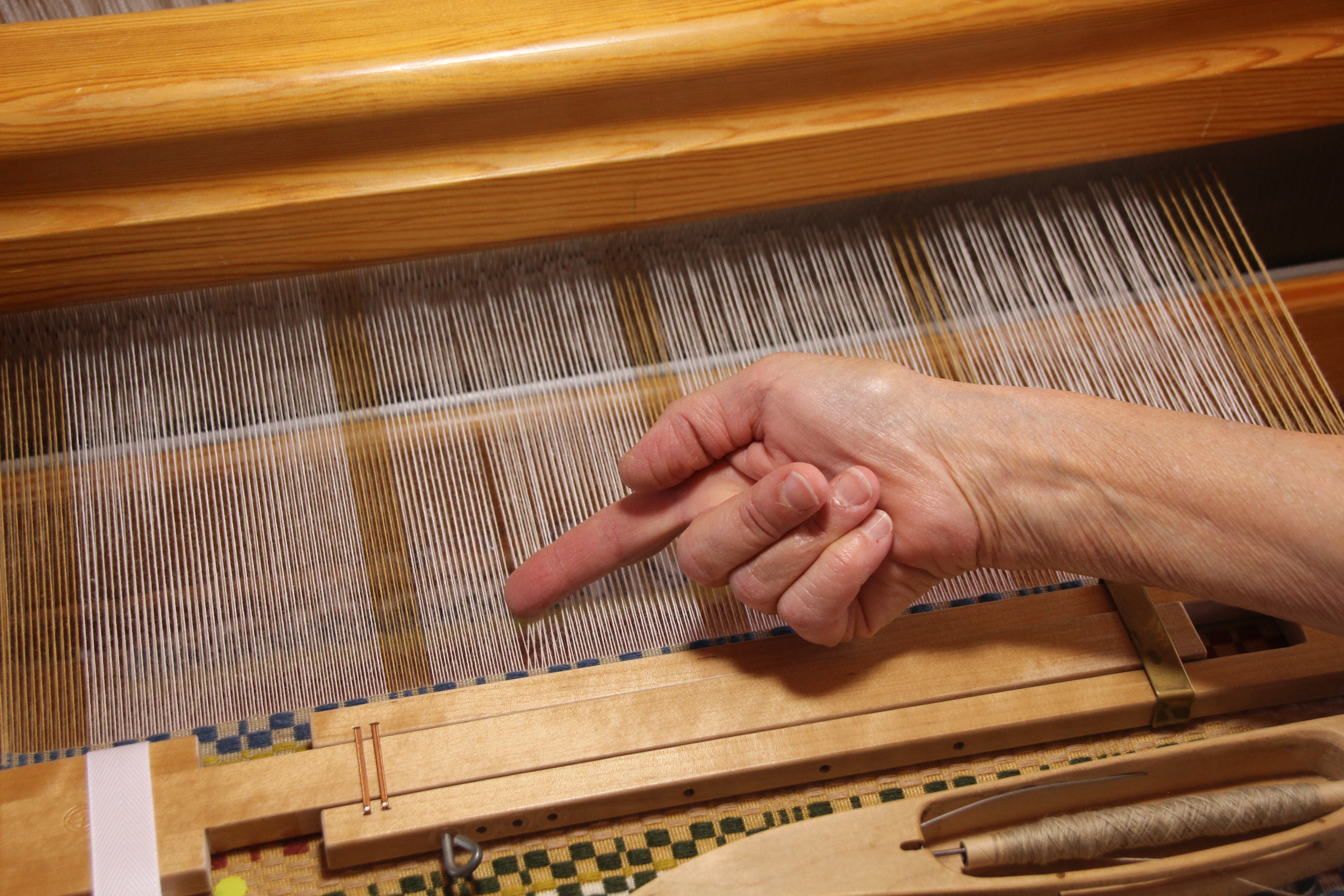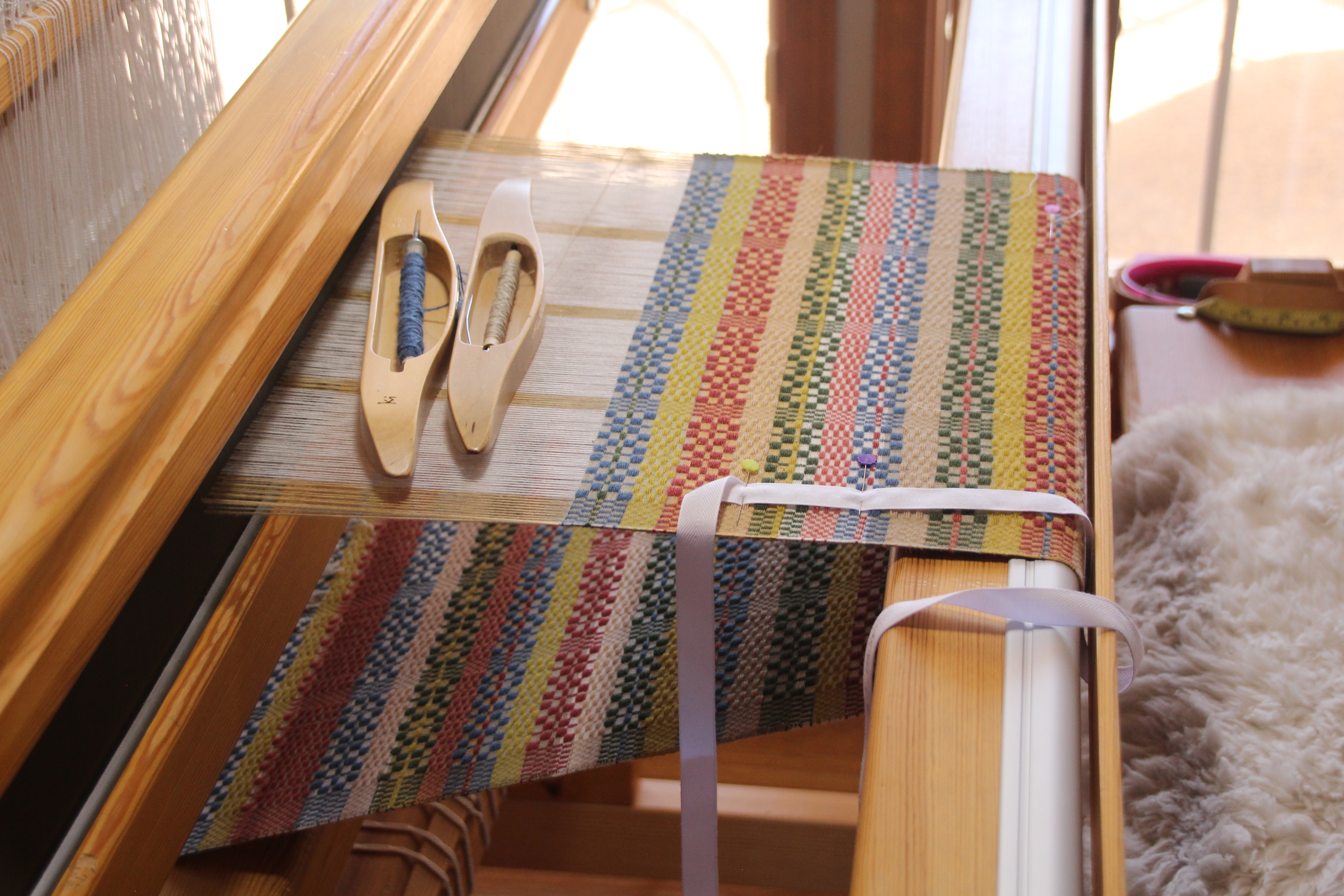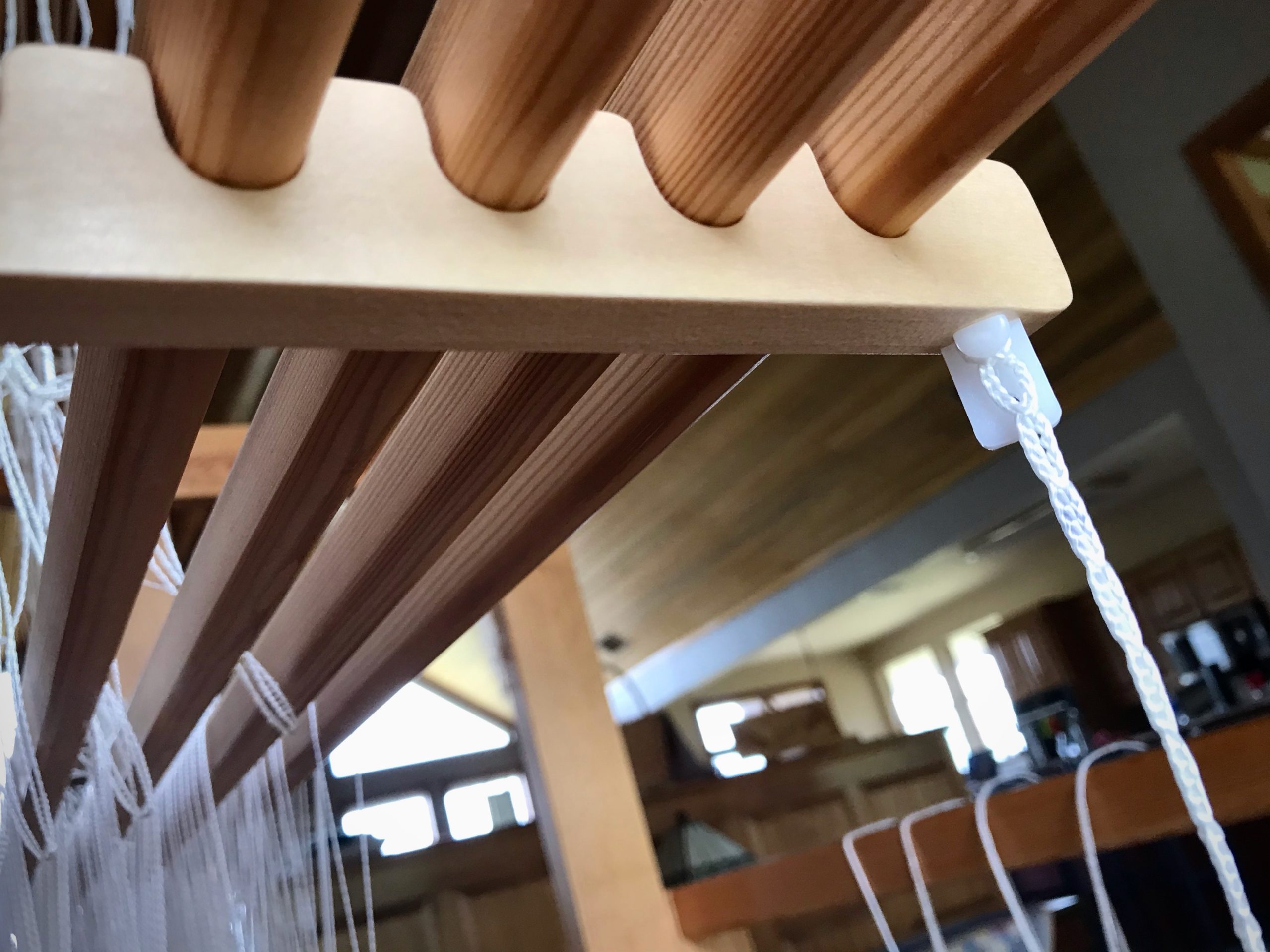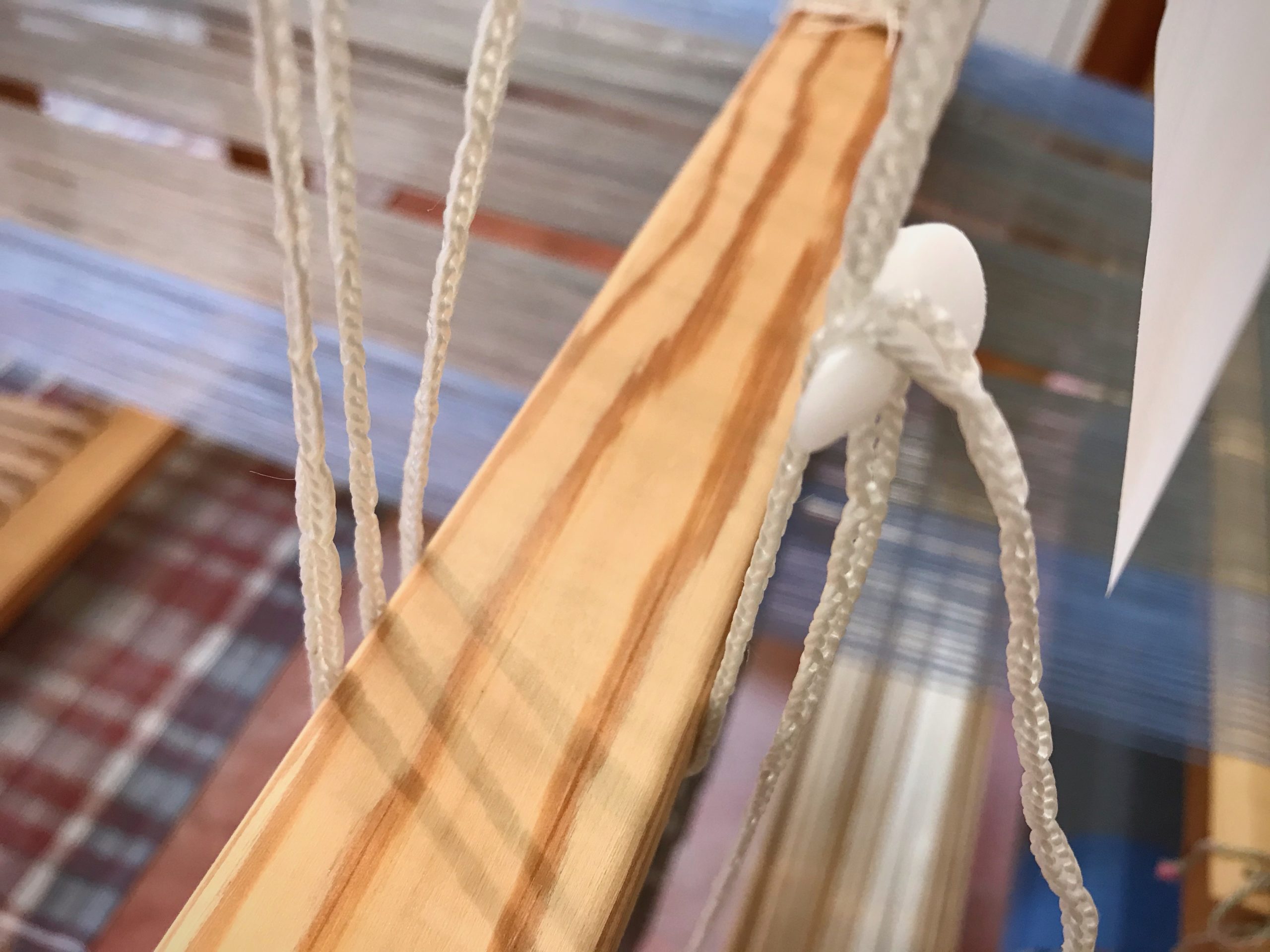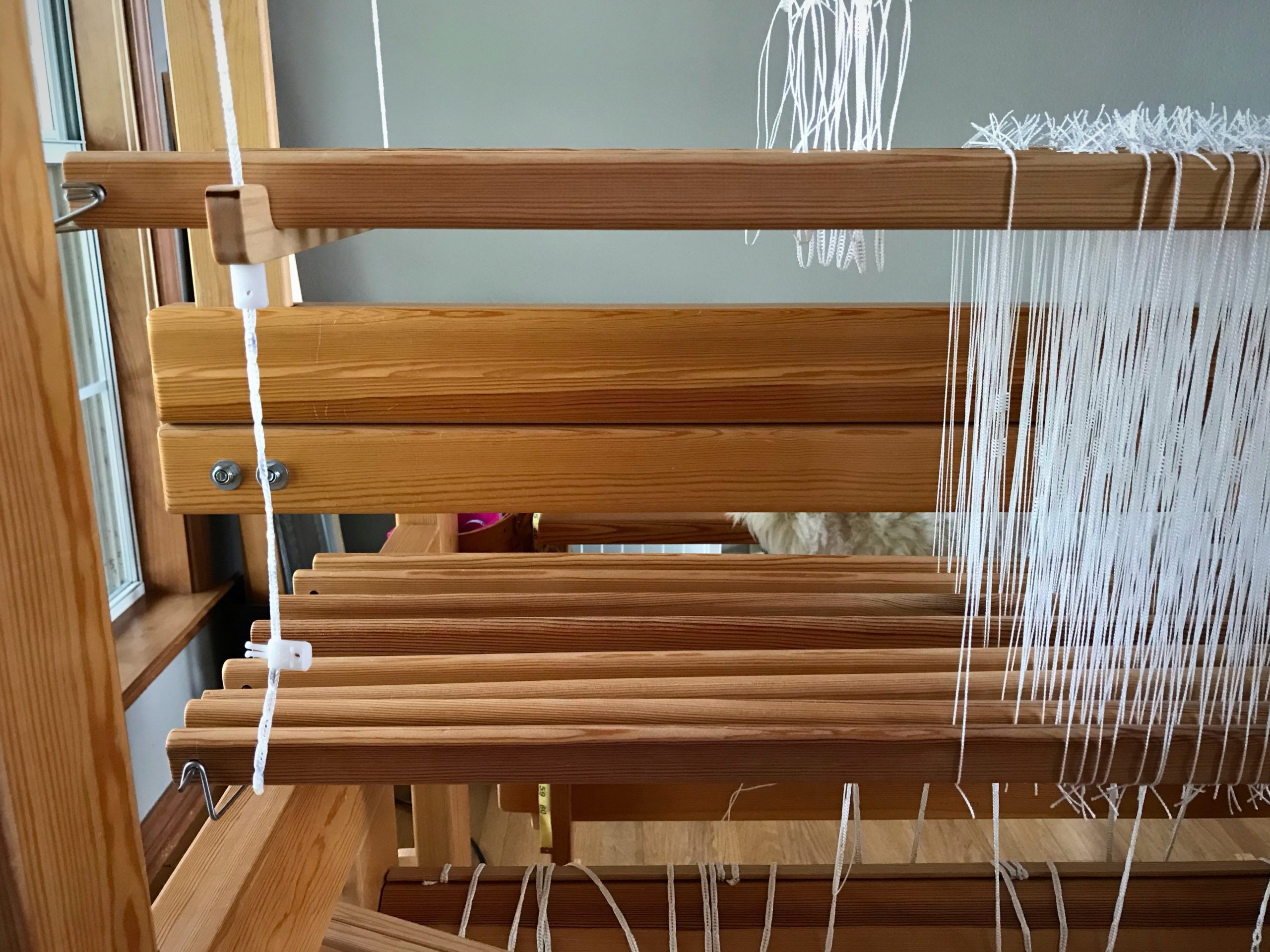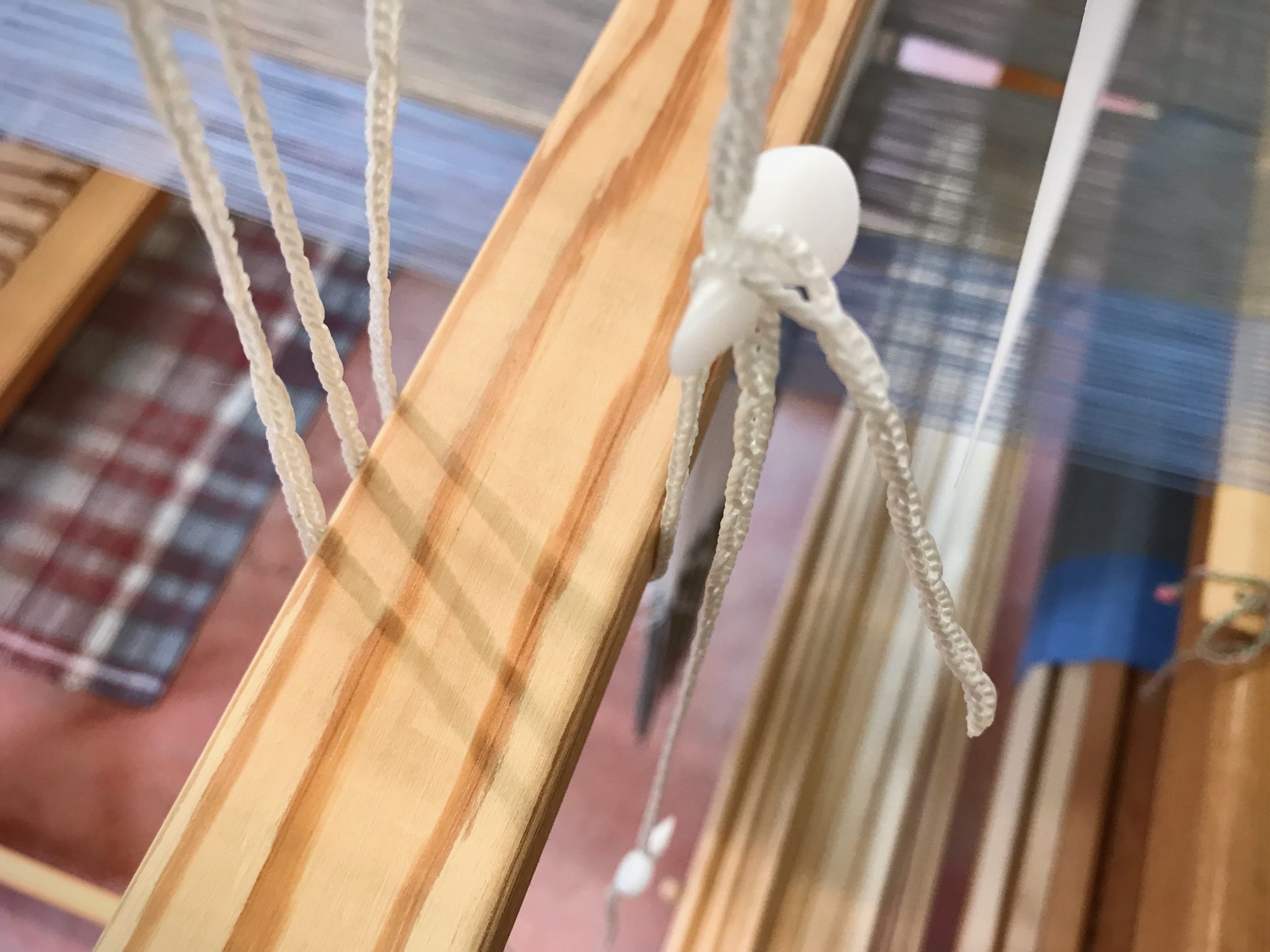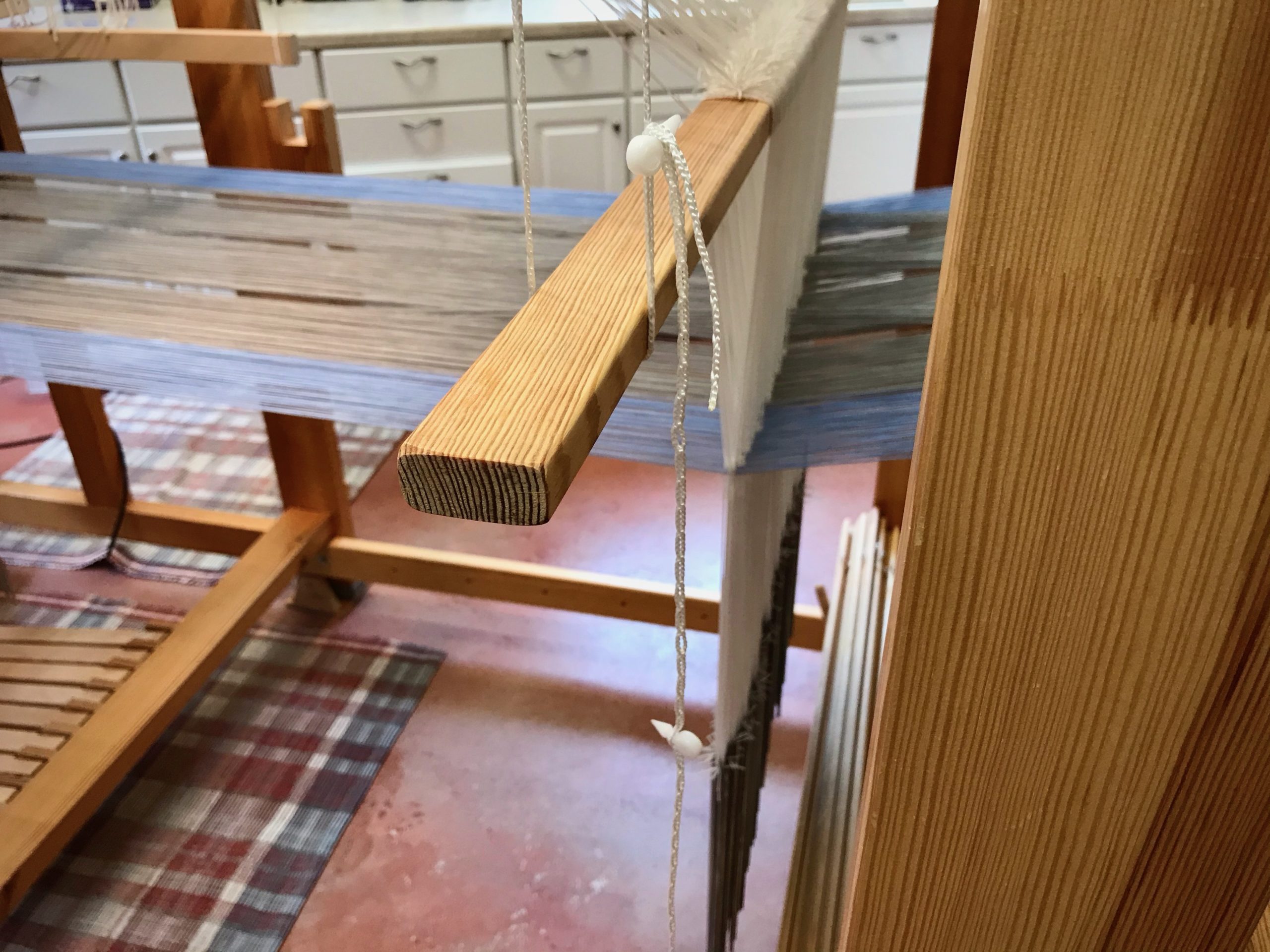As much as I am enthralled with what I am doing at the loom, my concentration ability wanes. It is in those waning moments that errors happen. Also, as you know, I have looms in my home, which means I can weave well into the evening in my pajamas, if I want to. But, I better not exceed my limits, or else…
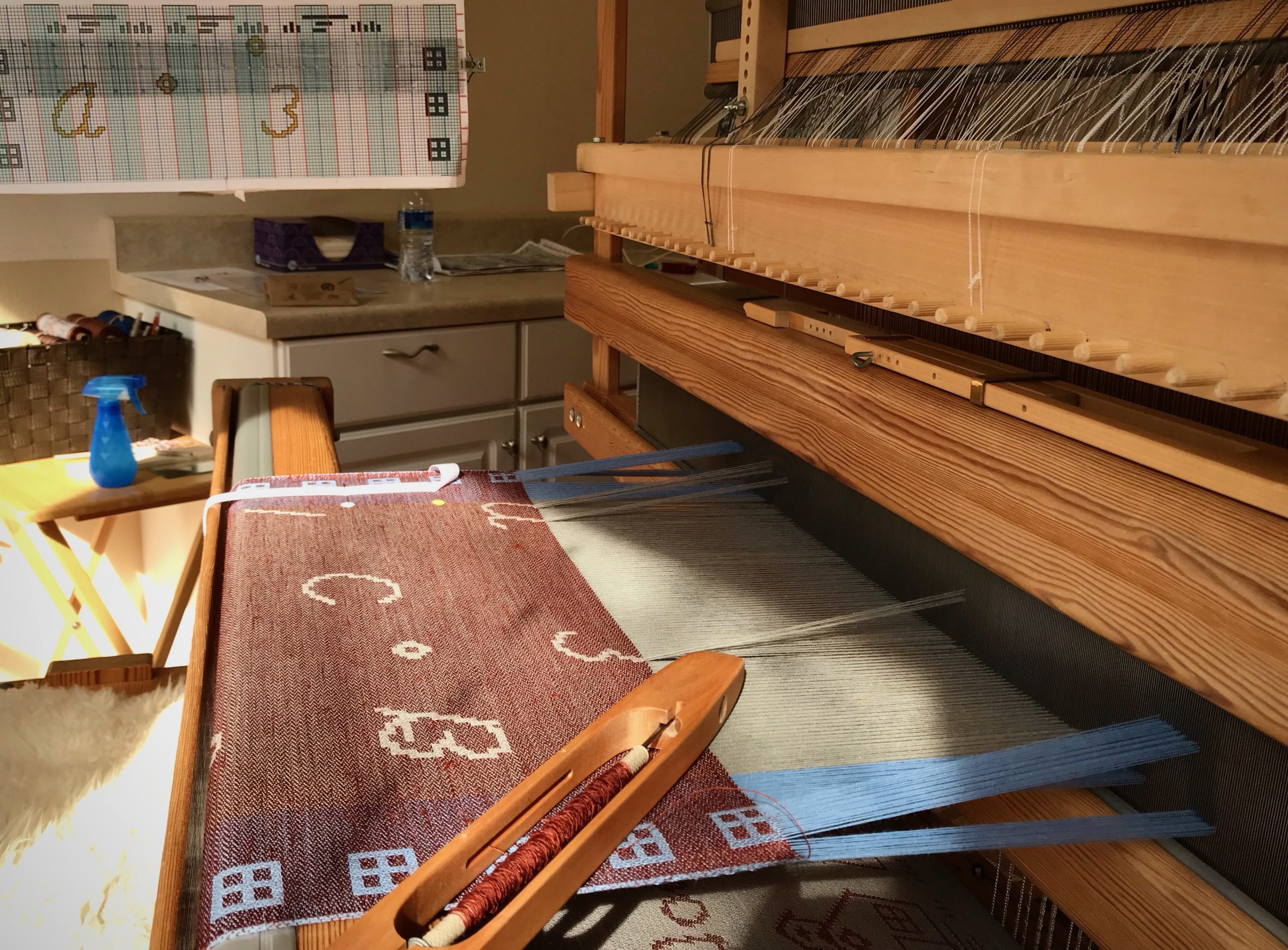
Weaving on the drawloom demands my undivided attention, as does pictorial tapestry and any intricate pattern weave. All of these are especially tedious to undo. Therefore, mistakes are outlawed! To that end, I have two secret weapons that prevent all most mistakes—
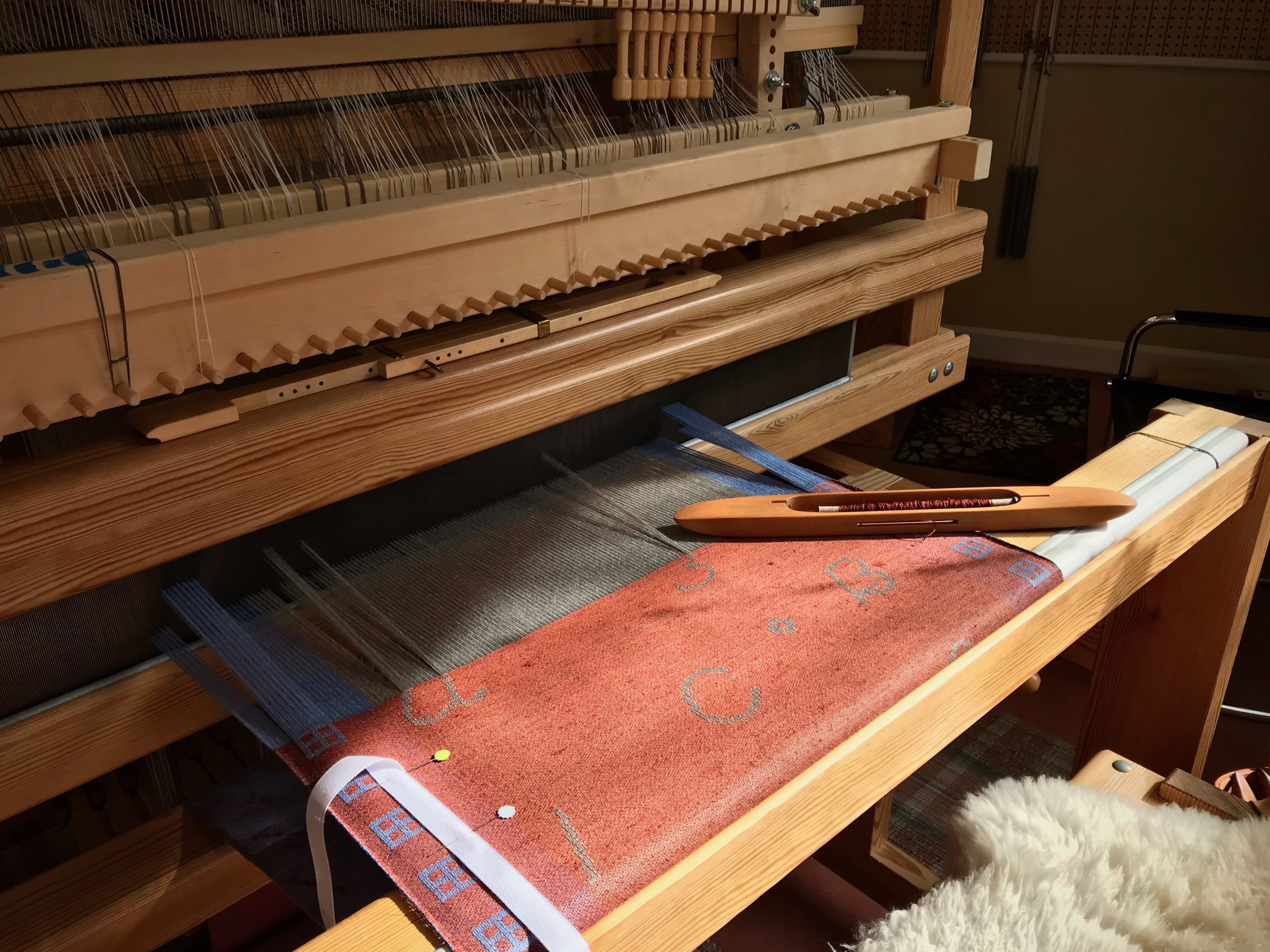
Five-Minute Breaks
Twenty-Five Minutes On – Five Minutes Off
25 Minutes. Go full strength. Be completely absorbed in the task.
5 Minutes. Take a break. Stand up, walk around, stretch.
(I use an app on my phone, Focus Time Activity Tracker, but any timer will do.)
The Cinderella Hour
Know When to Stop
If I am weaving at the end of the day (in my pajamas, or not), I stop when the clock chimes 8 times. I call it my Cinderella hour. My loom turns into a pumpkin after 8:00 pm. If I keep weaving, I can expect to be fixing errors the next day.
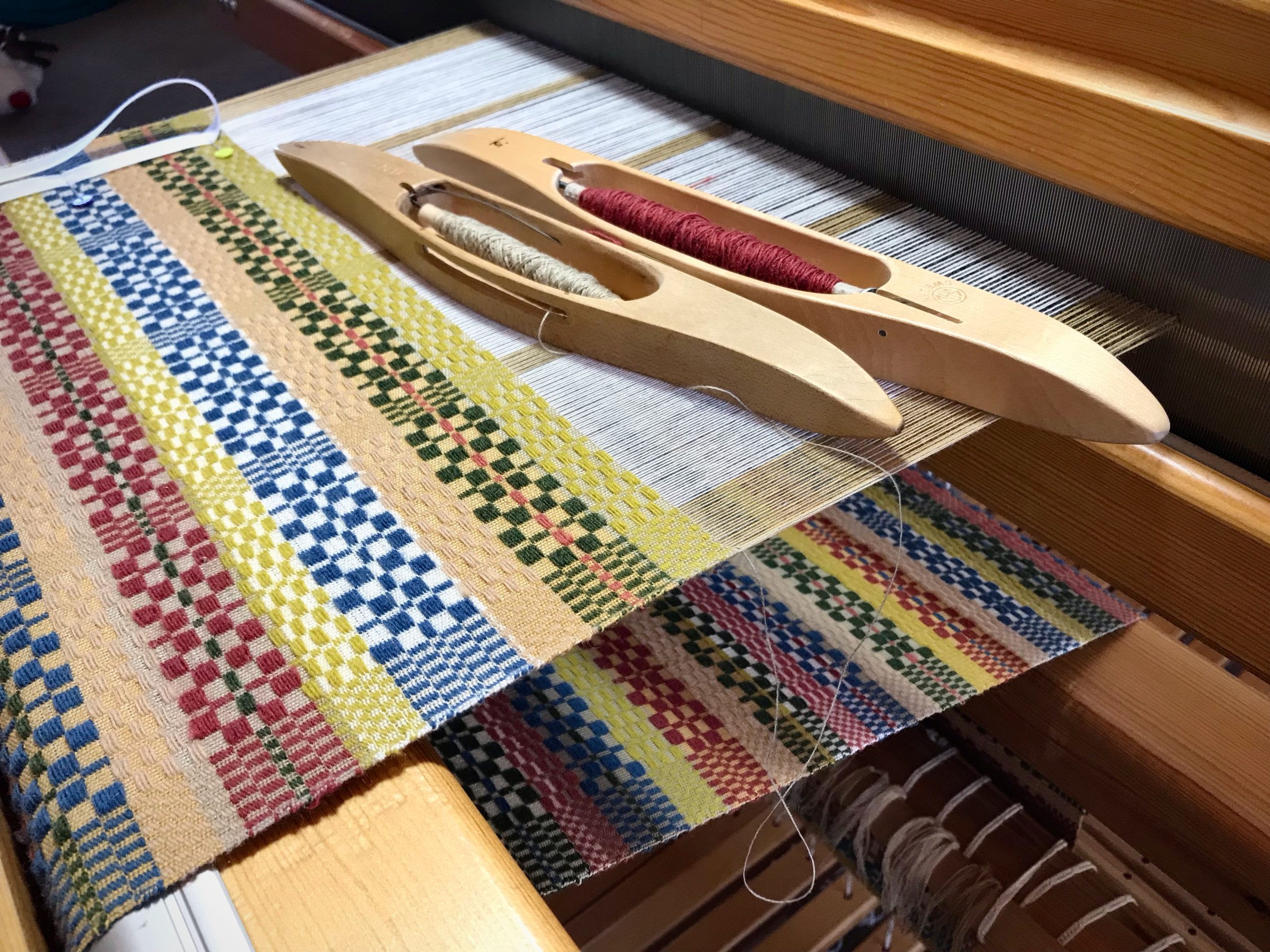
May you know when to take a break.
Happy Restful Weaving,
Karen






